The Oldest Continuous Wineries in the World
Recently a team of Armenian, US and Irish and archaeologists excavating a cave site located in southern Armenia, near the Iran border, found the world's oldest known winery dating back more than 6,000 years.
Although various wine bottles pre-date this find is oldest entire wine production facility ever found. It includes fermentation vats, a wine press and various storage jars. Radiocarbon analysis has dated the wine making facility to between 4100 BC and 4000 BC, during the Copper Age.
The evidence that the facility was for making wine from grapes include grape seeds found surrounding the vat, and remains of pressed grapes, various withered grape vines, as well as pottery fragments and also a cup and drinking bowl.
The vat design was similar to modern designs and consisted of shallow, square basin, about one metre square with a thick outer rim. It resembles wine presses that were used as recently as the 19th century throughout the Caucasus and the Mediterranean.
History of Wine
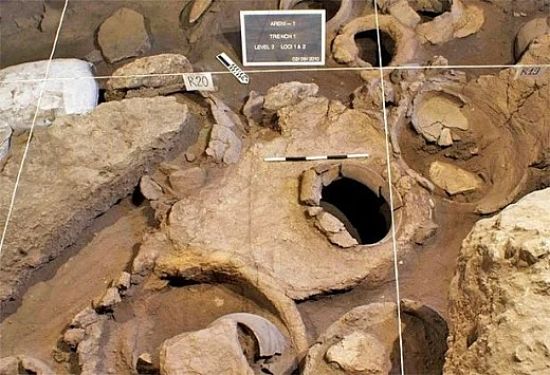
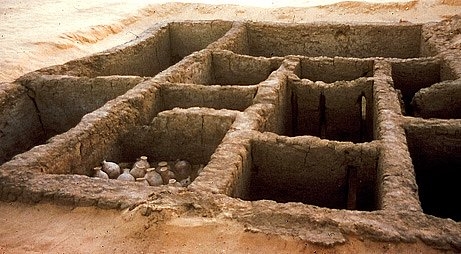
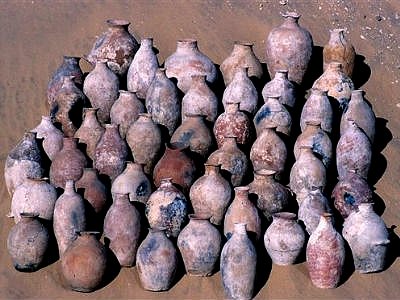
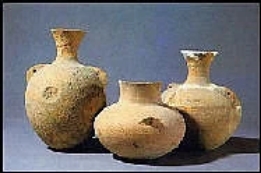
The wine was probably used for ceremonial purposes, rather than general consumption since the wine press and wine jugs were found close to an old grave sites.
Up until this finding, the earliest known wine press dated back to just 1650 BC, and was excavated in what is now the Israeli-occupied West Bank in 1963.
Wine is a Product of a Natural Process of Grape Fermentation
Wine, as a natural process of breakdown of grape juice by natural yeast on the skins of ripe grapes was probably "discovered" by accident and refined as a process. In this respect it is different to beer and bread which are more complicated processes requiring a specific invention.
The existing archaeological record shows that the earliest records of grape cultivation and wine drinking were dated as early as 6000 BC (8000 years ago). These first developments were found in Mesopotamia and around the Caspian Sea, near present-day Iran.
Texts from tombs in ancient Egypt show that wine was regularly used about 2700 to 2500 BC. The wine was mostly used by priests and royalty, while the general population drank beer. There is also evidences that the Egyptians developed the first arbors and cultivation methods such as pruning.
Many archeological sites have uncovered sunken jars at many sites, presumably for temperature controlled storage of wine. Recent research has confirmed that
King Tutankhamun was probably consumed red, following the analysis of a wine residues.
Wine was a luxury drink in ancient Egypt and bottles were even labelled with the wine's name, year of harvest, source and even vine grower.
One jar from Tutankhamun's tomb was marked:
"Year 5, Wine of the House-of-Tutankhamun
Rules-of-the-Southern-on
l.p.h (in) the Western River
By the chief Vintner Khaa"
Wine Making in Europe
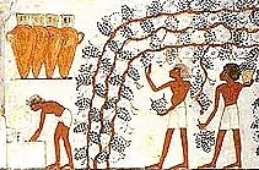


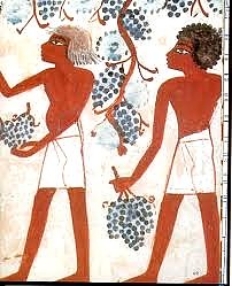
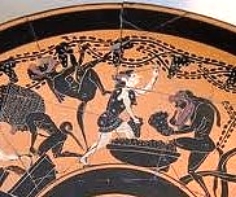
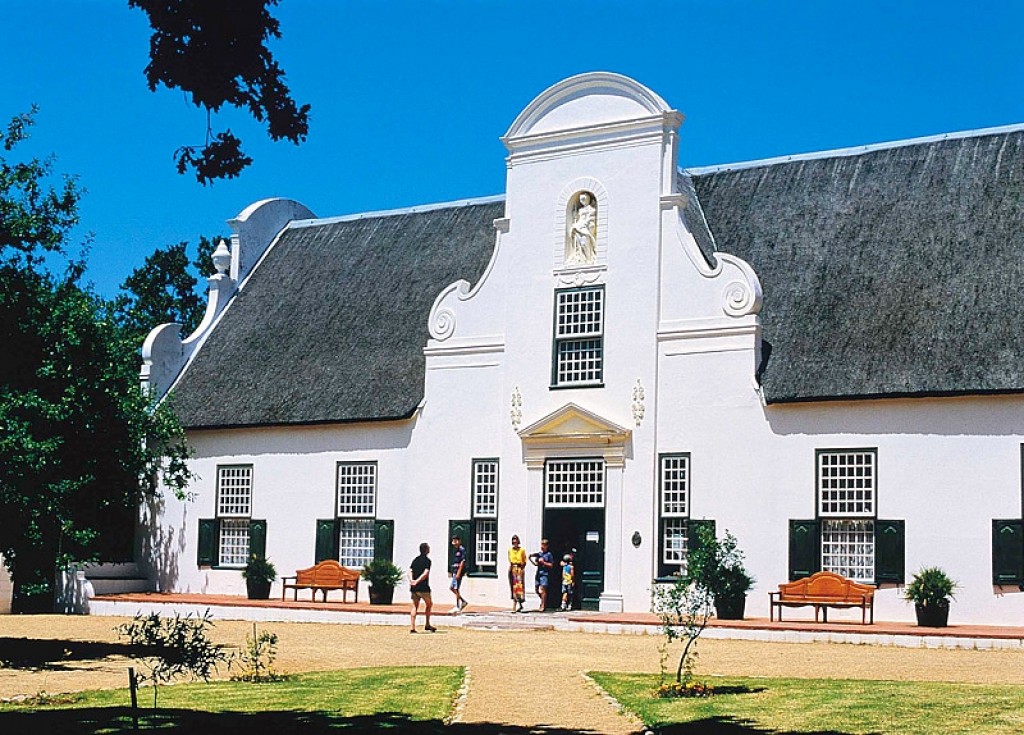
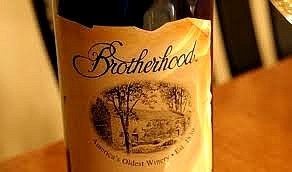
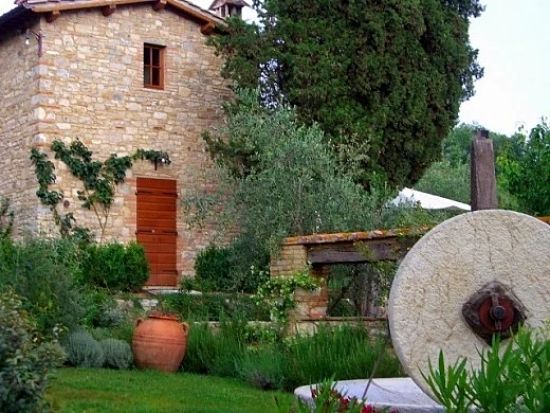
Wine and wine making expertise were imported to Europe by the spread of the Greek civilization around 1600 BC. The Iliad and the Odyssey, which were both written by Homer, contain extensive descriptions of wine and wine making.
Wine was an important item traded in of Greek commerce and Greek doctors prescribed it for various ailments, including Hippocrates, who the records show was one of the first doctors to prescribe it. The Greeks also added spices and herbs to mask spoilage odours and to flavour the wine.
However it was the Romans who had the strongest influence on viniculture in Western Europe. Starting about 1000 BC, the Romans developed methods for classifying grape varieties and colors, observing and recording ripening features and stages, identifying diseases and even recognizing soil-type preferences.
The Roman grape growers were very skilled at pruning and used fertilization and irrigation techniques to greatly increase yields. The Romans also used olive oil to preserve the wine. A layer of olive oil was floated on the top of the wine in jars to stop the process of oxidation when expose to air.
The Romans also developed wooden barrels for wine storage and transportation, which was a major advance over the previously used skins or clay jars (amphora)
Trade and Importance of Wine in Society
By the first century AD, wine there was an export travel for wine in barrels from the Empire (Italy) to Spain, England, Germany, and Gaul (France). After several years these regions began to develop their own fledgling vineyards, and these regional wines were so good that the Roman Emperor stopped the importation of French wines. France eventually became a dominant player in the world wine market.
Monastic wineries were the pioneers for vineyards and wineries that developed in Burgundy, Rhine Valley and Champagne. The sacramental use of wine helped to preserve the wine industry and its traditions and methods, through the dark ages.
The wine trade quickly developed. During the reign of Henry II in 1152, Britain became a major customer of Bordeaux wines. From 1703 until 1860, tariffs restricted French wine imports into Britain and encouraged those from Portugal.
Exploration, conquest and colonisation brought wine to Argentina, Mexico, North America and South Africa in the 1500s and 1600s. All the attempts to establish European wine vines along the and Gulf and Atlantic Coasts of North America and also in the Mississippi River basin valleys, failed an no one knew why.
The origin of the problem was subsequently traced to a root louse named Phylloxera vastatrix which attacks the roots and leaves of the vine and eventually kills the vine. Phylloxera is indigenous to the Mississippi River Valley and was unknown elsewhere. The local American species had developed thick root bark that stopped the louse from attacking the vine. The louse got into Britain when a local botanist brought in American vines.
By 1865, phylloxera had spread to France where it wiped out more than70% of the vineyards. Over the next 20 years, it spread its devastation to the rest of Europe, to Australia and to many other countries. Many procedures were tried to eradicate phylloxera but with no success.
The only way to do it was to graft the European varieties onto the resistant rootstocks of the native American species. So, there started a long, laborious method of grafting every wine vine in Europe onto American rootstocks.
Prohibition caused the destruction of the American wine industry. The first Prohibition legislation was introduced in Indiana in 1816, forbidding the sale of any alcohol on Sunday (still enforced to this day).
In December, 1917, Congress passed the Eighteenth Amendment to the U.S. Constitution, criminalizing the "manufacture, sale, or transportation of intoxicating liquors"; by February, 1919, 45 states had ratified it.
By the time of National Repeal in, 1933, the wine industry had been ruined. Some wineries managed to survive by getting permission to make wines used for sacramental, medicinal and non-beverage purposes, wine production fell by 94% from 1919 to 1925.
Before 1920, there were more than 2,500 commercial wineries in the United States. Less than 100 wineries survived the Prohibition and continued winemaking operations to 1933. The re-establishment of the American wineries was very slow. By 1960, the number of wineries had grown to only 271.
Oldest continuously producing wineries in the world
Travellers interested in the history of wine and wine-lovers everywhere are interested in the oldest wineries with continuous production in each of the major wine producing countries.
The oldest historic Winery in France
In the heart of Languedoc in the area near Beziers, France, the oldest historic winery in France was recently discovered. A team of archaeologists excavated a very well-preserved large Roman winemaking facility dating from about the 10th year AC. The owner was Quintus Julius Primus, who had his name blazed on all the vessels produced in the on-site pottery workshop.
The oldest continuous Winery in Italy
The winery of Feudi di San Gregorio, dates back to the time of San Gregorio Magno. That is 590 AD and the secrets of centuries old cultivation techniques have been jealously kept alive by local farmers.
Barone Ricasoli in Chianti Classico region of Italy is the oldest family run winery in the world. Located in Brolio it was established in 1141. Francesco Ricasoli, the 32nd Baron of Barone, manages the company to this day.
Strictly speaking, the title of the oldest wine company in Italy could possibly be claimed by the Loire Valley-based Château de Goulaine, because it was founded in 1000 AD. However is not known when the family first started producing commercial wine for sale and whether the production was continuous. Today the castle, which is still owned and operated by the Goulaine family, has a delightful museum and a fabulous butterfly collection. The family hosts functions and sells wine produced from the castle vineyards.
The oldest continuous Winery in Spain
Codorniu, based in Saint Sadurní d'Anoia in Catalonia, Spain, is the oldest. It was founded in 1551.
The oldest continuous Winery in Switzerland
Fonjallaz was founded in 1552
The oldest continuous winery in Australia
Wyndham Estate, Australia’s oldest winery, was established in 1828 at Dalwood, along the Hunter River, in central New South Wales by an English immigrant to Australia - George Wyndham. He planted 600 vine cuttings given to him by James Busby an English botanist. He produced his first vintage 7 years later and by the mid-1800s was exporting his unique wine to England and also to India. His wines won several international awards and George Wyndham was the most influential person who contributed to the development of the Australian Wine Industry.
To honour George Wyndham's outstanding achievements as a pioneer to Australian Wines, Dalwood Wines was renamed Wyndham Estate in 1970 - one hundred years after George Wyndham's death.
For detailed information of Australian Wineries and to search by name, location and variety grown see - Findawinery.com
Oldest operating winery in America
The Brotherhood Winery is generally regarded as the oldest continuously operating winery in the United States. The winery is located in Washingtonville, New York, which is a small historic community in the Hudson Valley. The Brotherhood Winery produced its first commercial vintage in 1839.
Oldest operating winery in New Zealand
New Zealand’s oldest, continuously operating winery is Mission Estate, founded by the Marist Fathers in 1851. Initially the winery only produced church and sacramental wines. However in the late 1900s the brothers bowed to public pressure and started selling wines to the public. Today Mission Estate’s principal varieties include Cabernet Merlot, Pinot Gris, Riesling, Sauvignon Blanc, Cabernet Sauvignon, Chardonnay, Gewurztraminer, Merlot and Syrah.
Oldest operating winery in Greece
The Achaia Clauss Factory, located about 7km southeast of Patra,is located in a delightful Bavarian-style castle is the oldest winery in Greece. The factory was established in 1861 by Gustav Clauss. Guided tours of the factory are available that showcase the wine-making facility.
Oldest operating winery in Argentina
Built in 1831, Colome is the oldest winery still in existence in Argentina. They have the excellent wines that are derived partially from Malbec and Cabernet Sauvignon vines, planted in 1854, which have survived the phylloxera louse that devastated the vines of this era. Colome has amongst the highest vineyards in the world. It is located at an altitude of 2,200-3,100 m above sea level.
Oldest operating winery in Chile
Founded in 1856, Cousiño Macul is the only remaining winery of the group that was established in the 19th century that has been continuously producing wine and remains in the hands of the founding family. Cousiño Macul focuses on producing world-class wines that are distinctly Chilean, reflecting the distinctive character of the Maipo Valley.
Another winery, Carta Vieja was founded in the Maule Valley in 1825.
Oldest continuous winery in South Africa
Groot Constantia Wine Estate was established by Commander Simon van der Stel of the Dutch East India Company (VOC) who arrived at the Cape supply station in 1679. BY 1709 there were 70,000 vines on the farm and Van der Stel produced 5,630 litres of wine and Constantia wine became renowned in Europe.
Oldest continuous winery in Portugal
José Maria da Fonseca is the oldest and perhaps the most prestigious winery in Portugal, producing wines, Port and Setubal Moscatel. The owners, the Soares Franco family, has been making and selling wine for over 160 years.
Oldest continuous winery in Mexico
In 1525 Governor of Mexico, Hernando Cortez, directed that grapes be planted in the colony. The wines were so successful that the King of Spain stopped any new plantings or replacement of vineyard after 1595, fearing Mexico would become self-sufficient in wine. This law was enforced for 150 years and prevented the development of commercial wineries.
Mexico has the reputation as the oldest wine-making region in all the Americas. In 1549, Spanish explorers found a fertile valley planted with native vines and founded the Mission of Santa María de las Parras or "Holy Mary of the Vines". In 1597, the Hacienda de San Lorenzo was established. The Casa Madero Winery is the oldest vineyard on the North American Continent. It is located in the valley of San Lorenzo, about 8 kms north of Parras de la Fuentein North Eastern Mexico.
Oldest continuous winery in Canada
Barnes Wines that was established in 1873 was sold to Grimsby Wines in 1932. The brand names lasted until the 1980-1990 and it is renowned as Canada's oldest continuous winery. Brights Wines is the second oldest, having been founded in 1874.
Oldest continuous winery in China
Located in north east China, near border with north Korea, Tonhwa Winery Limited (YHW) has more than 70 years history. It is one of the oldest winery in China. It is a public listed company in Shanghai Stock Exchange.